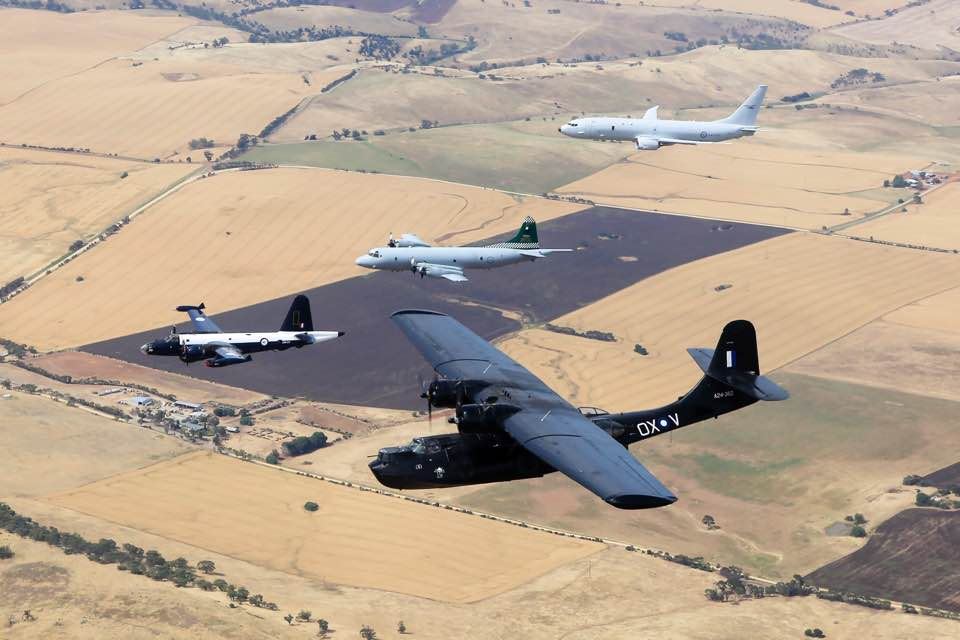
The PBY Catalina.
The PBY Catalina was one of the most successful flying boats produced. First flown in March 1935, they were in production for over ten years and were designed and built by the American aircraft manufacturer, Consolidated Aircraft of San Diego, California - PB stands for Patrol Bomber, with Y being Consolidated Aircraft’s manufacturer identification.
It could be equipped with depth charges, mines, bombs, torpedoes and .50 calibre machine guns and was one of the most widely used multi-role aircraft of World War II. It was also one of the most durable and effective aircraft of the War, due to its endurance and good load carrying capacity. It had a maximum speed of 170 knots and an endurance of 23 hours which could be extended to a fantastic 32 hours with auxiliary tanks. Consequently, Catalina’s were used by almost all the Allied services, including the RAF and RAAF. Although it was one of the slowest combat aircraft of World War II, it was preferred over all the newer, faster and better-equipped replacements from other manufacturers.
During WWII, it was a Catalina, flown by USN pilot Ensign Smith, that on Monday morning, 26th May 1941, found the Bismarck and allowed the British to sink her. It was also an RAAF Catalina on patrol in The Coral Sea that found the gathering Japanese fleet, and so started the Battle of the Coral Sea, and most likely saved Australia from invasion.
Flying boats, such as the Catalina, placed a special demand on training aircrews who not only learnt to fly the aircraft but needed to learn manoeuvres in sea conditions which were usually associated with naval operations. The famous Black Cats were used on covert night operations in just about every enemy port in the South West Pacific Area, operations extending as far as the Chinese coast. During these operations 320 aircrew were lost. The Black Cats were painted matt black and roamed the western Pacific from December 1942, laying mines in enemy harbours, finding Japanese ships by radar at night and picking up Allied survivors from ships and aircraft who were afloat in boats and dinghies.
The Catalina is a twin-engine high winged amphibious monoplane with retractable wing tip floats. It features an almost cantilevered wing mounted above a shallow but broad hull on a central pylon. The wing has a rectangular centre section and tapered outer panels, all of stressed-skin all-metal construction, though the ailerons and trailing edges are fabric-skinned.
A unique feature is the wing-tip floats, which are mounted on pivoted frames, which can be retracted electrically so that in flight the floats form the wingtips. The hull is also all-metal, with a broad semicircular upper surface.It was one of the first US aircraft to carry radar. At first this was a metric wave radar with arrays of dipole antennas on the wings, and later a centimetric radar in a fairing on top of the cockpit.
A 'Leigh Light' was installed on Catalina’s and Liberators. The Leigh Light was a 20 inch carbon arc searchlight mounted in a 32 inch diameter nacelle slung from the bomb lugs under the wing. It was used in conjunction with A.S.V. to illuminate surfaced submarines, other vessels or downed airmen at night.
The bow has a mooring compartment and transparent sighting window with a roller blind giving seawater protection. A turret all-round window was fitted in the upper bow. The two pilots sat side-by-side in a wide cockpit with large windows all round. Left and right gunner stations comprised blister windows on the waist of the hull behind the wing. The tail was of a tall design with the horizontal tail mounted well up the single fin. Power was supplied from a pair of two-row Pratt & Whitney Twin Wasp engines neatly cowled on the centre section with cooling gills and driving Hamilton variable-pitch propellers.
About 3,300 Catalinas were produced and there are a few still flying today, 78 years after their first flight.
